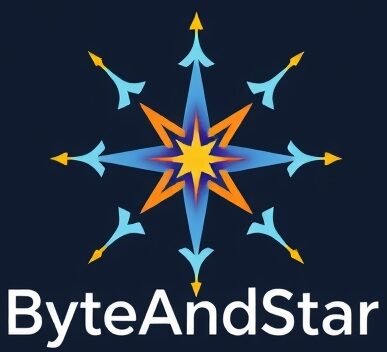Imagine owning a fraction of a luxury apartment in New York or an iconic piece of art by a renowned artist—all from the comfort of your home and with just a few clicks. Sounds futuristic, right? Well, tokenized ownership is turning this vision into reality! By enabling the tokenization of real-world assets, blockchain is democratizing ownership and unlocking new investment opportunities. In this blog, we’ll dive into how tokenized ownership is making finance more accessible, reshaping traditional investments, and creating an entirely new way to invest.
Understanding Tokenized Ownership
At its core, tokenized ownership is the process of converting the value of a real-world asset into digital tokens on a blockchain. These tokens represent shares or fractions of the underlying asset and can be bought, sold, or traded on digital platforms.
Here’s how it works: Let’s say you want to invest in a $1 million property. Instead of needing that hefty sum upfront, the property can be tokenized into, say, 10,000 tokens, each representing a $100 stake. You can purchase as many tokens as you like, making investing in premium assets more affordable.
Why Tokenized Ownership Matters
Accessibility: High-value assets like real estate, art, and collectibles are no longer reserved for the wealthy. Anyone can participate with a smaller investment.
Liquidity: Unlike traditional investments that may take months or years to sell, tokenized assets can be traded on digital marketplaces, providing faster access to funds.
Transparency: Blockchain’s transparency ensures that each transaction is recorded and verifiable, building trust in ownership records.
By breaking down barriers to entry, tokenized finance is empowering everyday investors to build diversified portfolios like never before.
How Blockchain Secures Tokenized Ownership 🛡️
Blockchain’s decentralized and immutable nature plays a crucial role in ensuring secure and transparent transactions.
Key Security Features
Smart Contracts: These are self-executing digital agreements programmed to enforce the terms of an asset sale automatically. For instance, once the payment is received, the smart contract transfers the ownership stake without requiring manual intervention.
Immutability: Transactions recorded on the blockchain cannot be altered or deleted, making fraud nearly impossible.
Decentralized Ledgers: Ownership records are maintained across multiple nodes, preventing single points of failure and unauthorized tampering.
Key Security Features
Platforms like RealT allow users to invest in tokenized rental properties in the U.S. Investors receive rental income proportional to their stake—directly into their digital wallets!
The New Wave of Tokenized Asset Ownership 🌊
Tokenization isn’t limited to real estate; it’s making waves in several industries:
Real Estate
Imagine owning a piece of a commercial skyscraper without millions in your bank account. Blockchain platforms like Propy and Harbor enable fractional ownership of real estate properties, making global real estate accessible.
Art and Collectibles 🎨
Art investment has traditionally been exclusive to high-net-worth individuals. However, tokenization platforms like Masterworks allow everyday investors to own shares in masterpieces from artists like Banksy and Picasso.
Music Royalties and Media 🎶
Artists can tokenize their music royalties, allowing fans to buy stakes and earn a share of streaming revenues. This model is transforming how artists fund their projects and connect with their audience.
Real-World Success Stories 📈
Santander’s Tokenized Bonds
Santander became one of the first banks to issue a fully tokenized bond on the Ethereum blockchain, demonstrating how traditional financial institutions are adopting this innovation to streamline operations and enhance transparency.
Fractional Ownership Platform Case Study
Startup companies like Securitize are leading the way by offering compliant platforms where private companies can tokenize shares and offer them to investors. This has helped businesses raise capital more efficiently while giving investors new avenues to diversify.
Benefits and Potential Pitfalls
Key Benefits
Increased Accessibility: More people can now invest in traditionally exclusive assets.
Portfolio Diversification: Tokenized ownership enables smaller investors to spread their capital across multiple asset classes.
Lower Transaction Costs: Blockchain-based platforms reduce the need for intermediaries, lowering fees.
Challenges to Watch
Regulatory Uncertainty: Tokenized assets are subject to various regulations, which can differ by country.
Platform Security: While blockchain itself is secure, the platforms facilitating tokenized ownership may be vulnerable to cyberattacks.
Illiquidity Risk: Some tokenized assets, like private real estate, may not always have enough buyers or sellers to ensure liquidity.
The Future of Tokenized Ownership 🚀
The future of finance is fractional and inclusive. As regulatory frameworks evolve, the adoption of tokenized assets is expected to grow rapidly. Centralized and decentralized financial institutions are already exploring ways to integrate blockchain-based asset platforms into their services.
Emerging Trends to Watch
Tokenized Stocks: Companies are beginning to offer digital shares on blockchain platforms.
Real-Time Settlements: Blockchain technology is enabling near-instant settlement of asset trades.
Crowdfunded Tokenized Investments: Expect a rise in community-driven projects where groups pool funds to buy tokenized assets.
Key Players Leading the Way
Platforms like Securitize and Republic are providing frameworks for compliant, tokenized investing, while institutional giants like Fidelity are exploring blockchain integration for new investment models.
Final Thought
Tokenized ownership, powered by blockchain technology, is reshaping how we think about ownership and investment. By breaking down high-value assets into manageable pieces, tokenization is democratizing access to opportunities that were once out of reach for everyday investors. However, as with any emerging technology, it’s essential to stay informed and cautious of potential risks.
As the blockchain revolution continues, the opportunities for tokenized ownership will only expand—opening doors for investors across the globe. Whether it’s owning a slice of an iconic painting or a stake in a beachfront property, the future of finance is now within everyone’s grasp. Are you ready to take your first step into the world of tokenized ownership? 🏠💸🚀
Ready to Learn More? For more in-depth articles on blockchain and finance trends, visit ByteAndStar—your trusted source for tech insights, financial guides, and the latest innovations. Let us help you navigate the future of decentralized finance and beyond! 🌟
Tokenized ownership refers to the process of converting the value of a real-world asset, such as real estate, art, or music royalties, into digital tokens that represent fractional shares of the asset. These tokens can be bought, sold, or traded on blockchain-based platforms.
Tokenization allows investors to purchase small fractions of high-value assets, making it possible to participate in investment opportunities that were previously only available to wealthy individuals. This democratizes asset ownership and enables portfolio diversification with smaller capital.
Yes, tokenized ownership leverages blockchain technology, which ensures security through decentralization, cryptographic validation, and immutable ledgers. However, the security of the platform facilitating the transactions should also be considered.
A wide range of assets can be tokenized, including real estate properties, art, music royalties, intellectual property, and even company shares. The potential for tokenization continues to expand as the technology matures.
Yes, there are risks such as regulatory uncertainty, platform vulnerabilities, and illiquidity. Some tokenized assets may lack active buyers or sellers, making it difficult to quickly convert them back to cash. It’s essential to conduct thorough research before investing.

